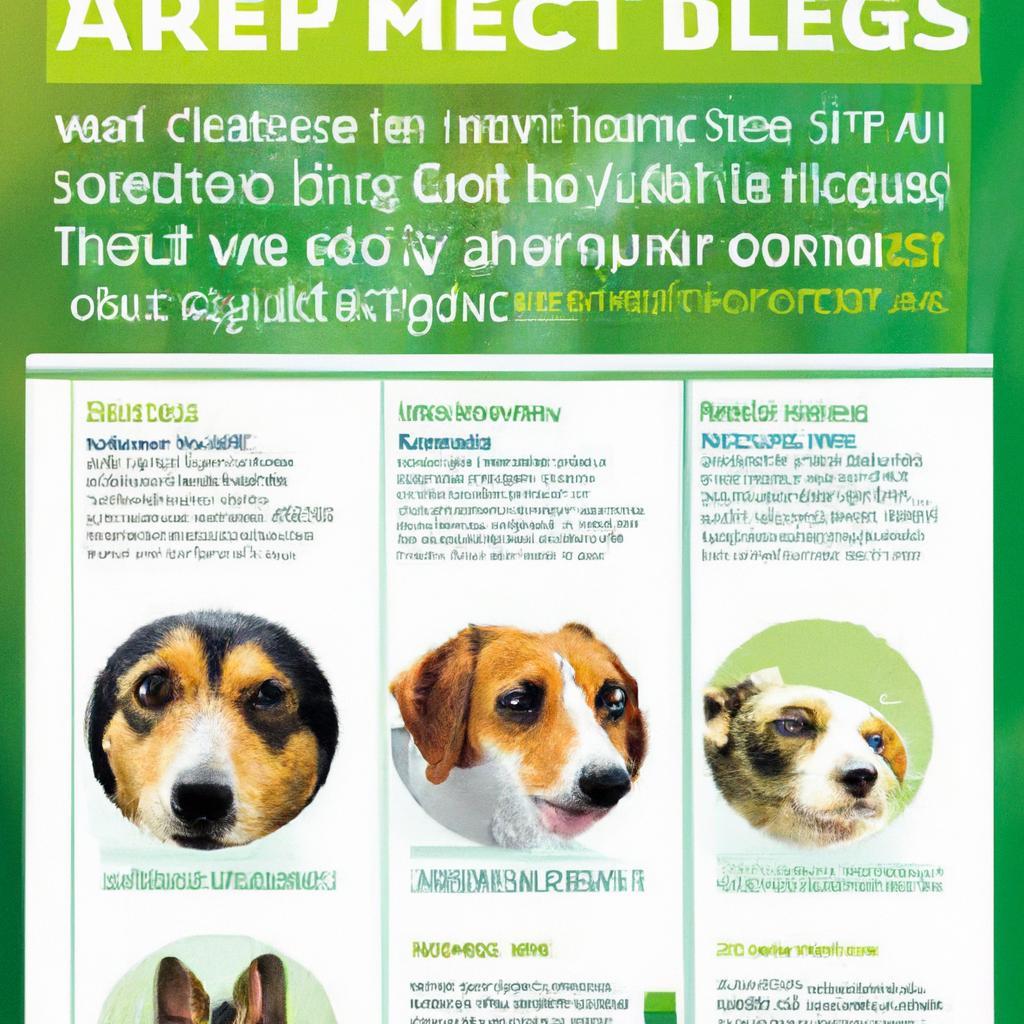Imagine a family longing for a furry companion but held back by allergies. They discover the secret to a hypoallergenic dog: it’s not about the breed alone, but a combination of grooming, diet, and environment. Regular baths reduce dander, while a balanced diet strengthens the dog’s coat, minimizing shedding. Investing in air purifiers and frequent cleaning can create a safe haven. With dedication, they transform their home into a welcoming space for a beloved pet, proving that love can conquer allergies. Embrace the joy of a hypoallergenic dog!
Contents
- Understanding Hypoallergenic Dogs and Their Unique Needs
- Choosing the Right Breeds for Allergy Sufferers
- Implementing Effective Grooming Practices for Allergy Management
- Creating an Allergen-Free Environment for Your Dog and Family
- Q&A
Understanding Hypoallergenic Dogs and Their Unique Needs
When considering a dog that is less likely to trigger allergies, it’s essential to understand that no dog is entirely hypoallergenic. However, certain breeds produce fewer allergens, making them more suitable for allergy sufferers. These breeds often have hair instead of fur, which reduces the amount of dander and saliva that can become airborne. This unique characteristic allows for a more comfortable living environment for those sensitive to pet allergens.
To ensure the well-being of hypoallergenic dogs, it’s crucial to meet their specific grooming and care needs. Regular grooming helps to minimize shedding and dander, which can accumulate in your home. Consider the following grooming practices:
- Frequent brushing: This helps remove loose hair and dander before it can spread throughout your living space.
- Bathing: Regular baths with hypoallergenic shampoos can reduce allergens on the dog’s skin.
- Professional grooming: Engaging a professional groomer familiar with hypoallergenic breeds can ensure proper care.
In addition to grooming, maintaining a clean home environment is vital for managing allergens. Implementing a few simple practices can significantly reduce the presence of allergens in your home. Consider these strategies:
- Air purifiers: Investing in high-efficiency particulate air (HEPA) filters can help trap airborne allergens.
- Regular cleaning: Vacuuming with a HEPA filter and washing pet bedding frequently can minimize allergen accumulation.
- Designated pet areas: Keeping your dog out of certain rooms, especially bedrooms, can help create allergy-free zones.
it’s essential to recognize that each dog has its own personality and needs, regardless of its hypoallergenic status. Socialization, exercise, and mental stimulation are critical components of a healthy lifestyle for all dogs. By understanding and addressing these unique needs, you can create a nurturing environment that benefits both you and your hypoallergenic companion, allowing for a harmonious relationship that enhances your quality of life.
Choosing the Right Breeds for Allergy Sufferers
When selecting a dog for allergy sufferers, it’s essential to consider breeds that are known for producing fewer allergens. While no dog is entirely hypoallergenic, certain breeds are less likely to trigger allergic reactions due to their unique coat types and grooming needs. Breeds with hair instead of fur, such as Poodles and Bichon Frises, tend to shed less dander and hair, making them more suitable for sensitive individuals.
Another factor to consider is the dog’s size and energy level. Smaller breeds often require less space and can adapt well to apartment living, which is ideal for those with allergies who may also have limited mobility or space. Additionally, breeds like the Maltese and Shih Tzu are not only compact but also have coats that require regular grooming, which helps minimize allergens in the home. Regular grooming can significantly reduce the amount of dander and hair that accumulates in your living environment.
It’s also important to evaluate the temperament of the breed. Some breeds are known for their calm demeanor and adaptability, which can be beneficial for allergy sufferers who may experience stress or anxiety related to their allergies. Breeds such as the Cavalier King Charles Spaniel and the Basenji are known for their affectionate nature and can provide companionship without overwhelming their owners. Choosing a breed with a gentle temperament can enhance the overall experience of pet ownership, especially for those with allergies.
Lastly, consider the maintenance and care requirements of the breed. Some hypoallergenic breeds require more frequent grooming and bathing to keep their coats healthy and minimize allergens. Investing time in regular grooming routines not only helps manage allergens but also strengthens the bond between you and your pet. By selecting a breed that aligns with your lifestyle and allergy management needs, you can enjoy the companionship of a dog while minimizing allergic reactions.
Implementing Effective Grooming Practices for Allergy Management
Maintaining a consistent grooming routine is essential for minimizing allergens in your home and ensuring your dog remains comfortable. Regular grooming not only helps to control shedding but also reduces the accumulation of dander, which is a primary allergen for many people. By implementing effective grooming practices, you can significantly decrease the presence of allergens in your environment.
To start, consider the following grooming techniques:
- Frequent Brushing: Brush your dog at least once a week, or more often for breeds that shed heavily. This helps to remove loose fur and dander before it can settle in your home.
- Bathing: Bathe your dog every 4 to 6 weeks using a hypoallergenic shampoo. This not only cleans their coat but also helps to reduce the amount of dander produced.
- Professional Grooming: Schedule regular appointments with a professional groomer who understands hypoallergenic grooming techniques. They can provide specialized services that may be difficult to achieve at home.
In addition to these grooming practices, it’s crucial to pay attention to your dog’s environment. Keeping your living space clean can further minimize allergens. Regularly vacuuming carpets and upholstery, using air purifiers, and washing your dog’s bedding can create a healthier atmosphere for both you and your pet. Consider using a vacuum with a HEPA filter to effectively trap allergens.
be mindful of your dog’s diet and overall health, as these factors can influence the amount of dander produced. A balanced diet rich in omega fatty acids can promote a healthy coat and skin, reducing the likelihood of excessive shedding and dander. Consult with your veterinarian to ensure your dog is receiving the best nutrition tailored to their specific needs.
Creating an Allergen-Free Environment for Your Dog and Family
Creating a safe and comfortable space for both your dog and family members with allergies requires thoughtful planning and execution. Start by selecting the right breed. While no dog is completely hypoallergenic, some breeds produce fewer allergens than others. Consider breeds like the Poodle, Bichon Frise, or Maltese, which are known for their low-shedding coats. This can significantly reduce the amount of dander and hair in your home.
Next, invest in high-quality air purifiers equipped with HEPA filters. These devices are designed to capture tiny particles, including pet dander, dust, and pollen, ensuring that the air remains clean and allergen-free. Place them strategically in areas where your dog spends the most time, as well as in common living spaces. Regularly changing the filters will maximize their effectiveness and maintain a healthy environment.
Maintaining a rigorous cleaning routine is essential in minimizing allergens. Implement a schedule that includes:
- Frequent vacuuming: Use a vacuum cleaner with a HEPA filter to trap allergens effectively.
- Washing dog bedding: Clean your dog’s bedding and toys weekly to eliminate dander buildup.
- Hard surface cleaning: Regularly wipe down surfaces with damp cloths to capture dust and allergens.
establish designated areas for your dog. By keeping your pet out of bedrooms and off furniture, you can create allergen-free zones that provide relief for sensitive family members. Consider using gates or crates to help enforce these boundaries. Additionally, regular grooming and bathing of your dog can help reduce the amount of loose fur and dander in your home, further contributing to a healthier living environment.
Q&A
-
What does hypoallergenic mean in relation to dogs?
Hypoallergenic dogs are breeds that are less likely to trigger allergic reactions in sensitive individuals. This is often due to lower levels of shedding and dander, which are common allergens.
-
Which dog breeds are considered hypoallergenic?
Some popular hypoallergenic breeds include:
- Poodle
- Bichon Frise
- Portuguese Water Dog
- Shih Tzu
- Yorkshire Terrier
These breeds are known for their minimal shedding and reduced dander production.
-
How can I reduce allergens from my dog?
To minimize allergens, consider the following:
- Regular grooming and bathing to remove loose hair and dander.
- Using air purifiers to filter out allergens in your home.
- Establishing pet-free zones, especially in bedrooms.
- Cleaning your home frequently, including vacuuming and dusting.
-
Is it possible to make any dog hypoallergenic?
While you cannot change a dog’s genetic predisposition to produce allergens, you can take steps to manage and reduce allergens effectively. Regular grooming, cleaning, and choosing the right breed can significantly help in creating a more allergy-friendly environment.
while no dog is completely hypoallergenic, choosing the right breed, maintaining a clean environment, and regular grooming can significantly reduce allergens. Invest in your health and happiness by selecting a dog that fits your lifestyle.




